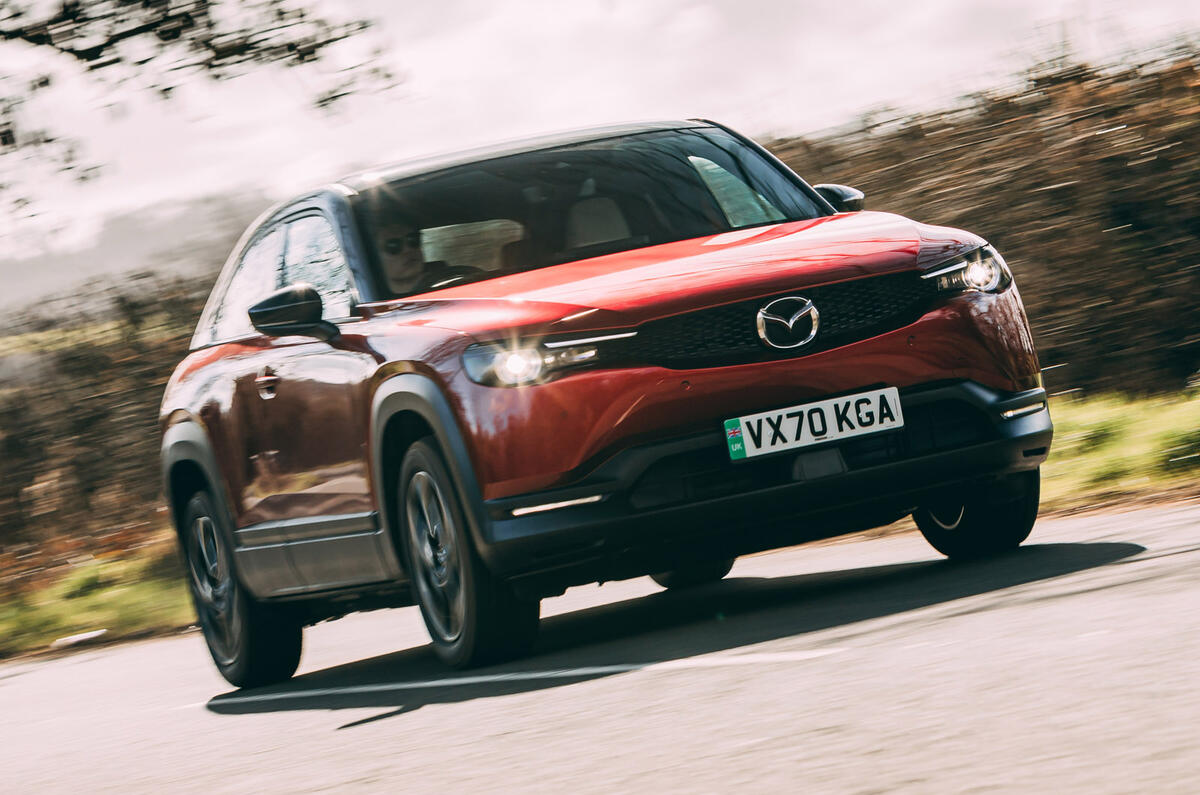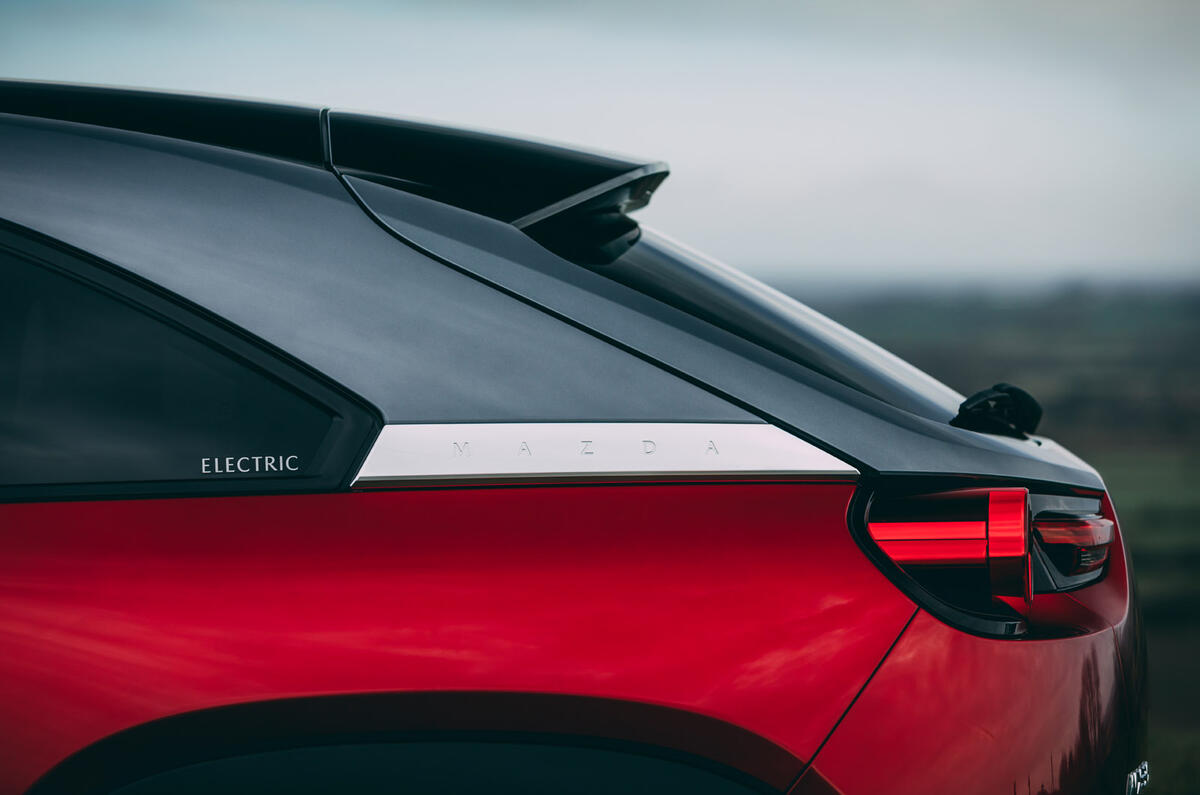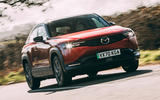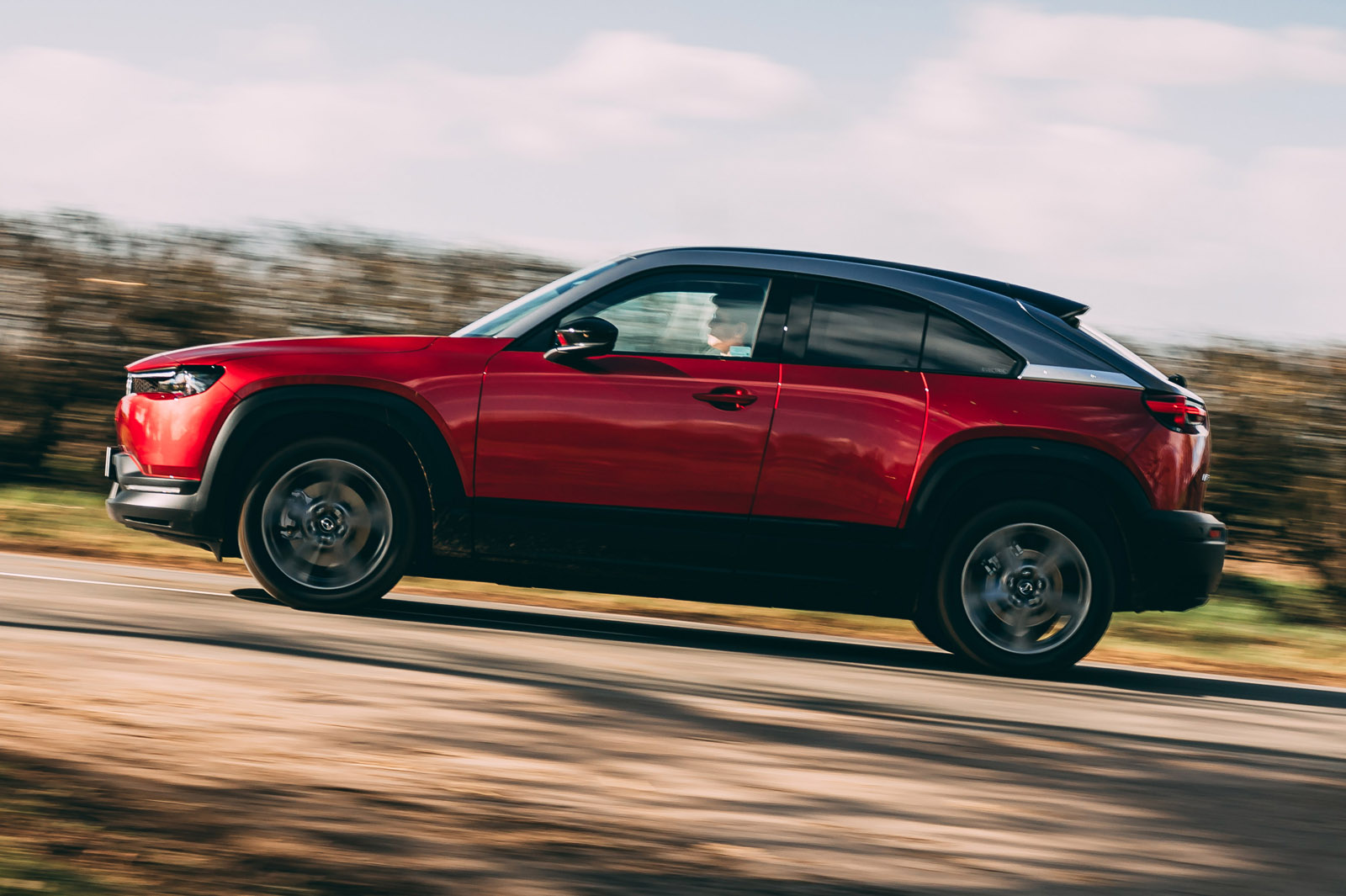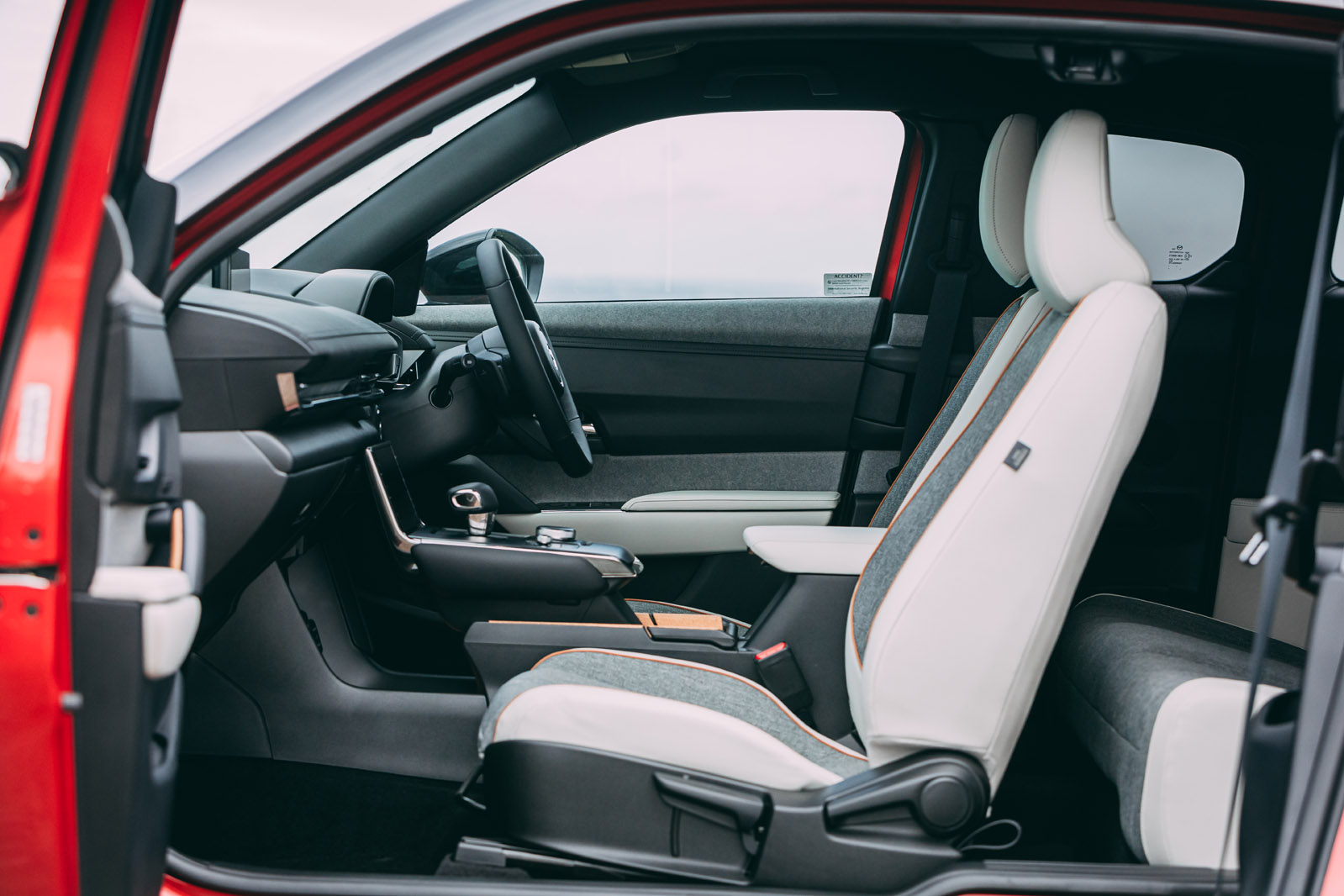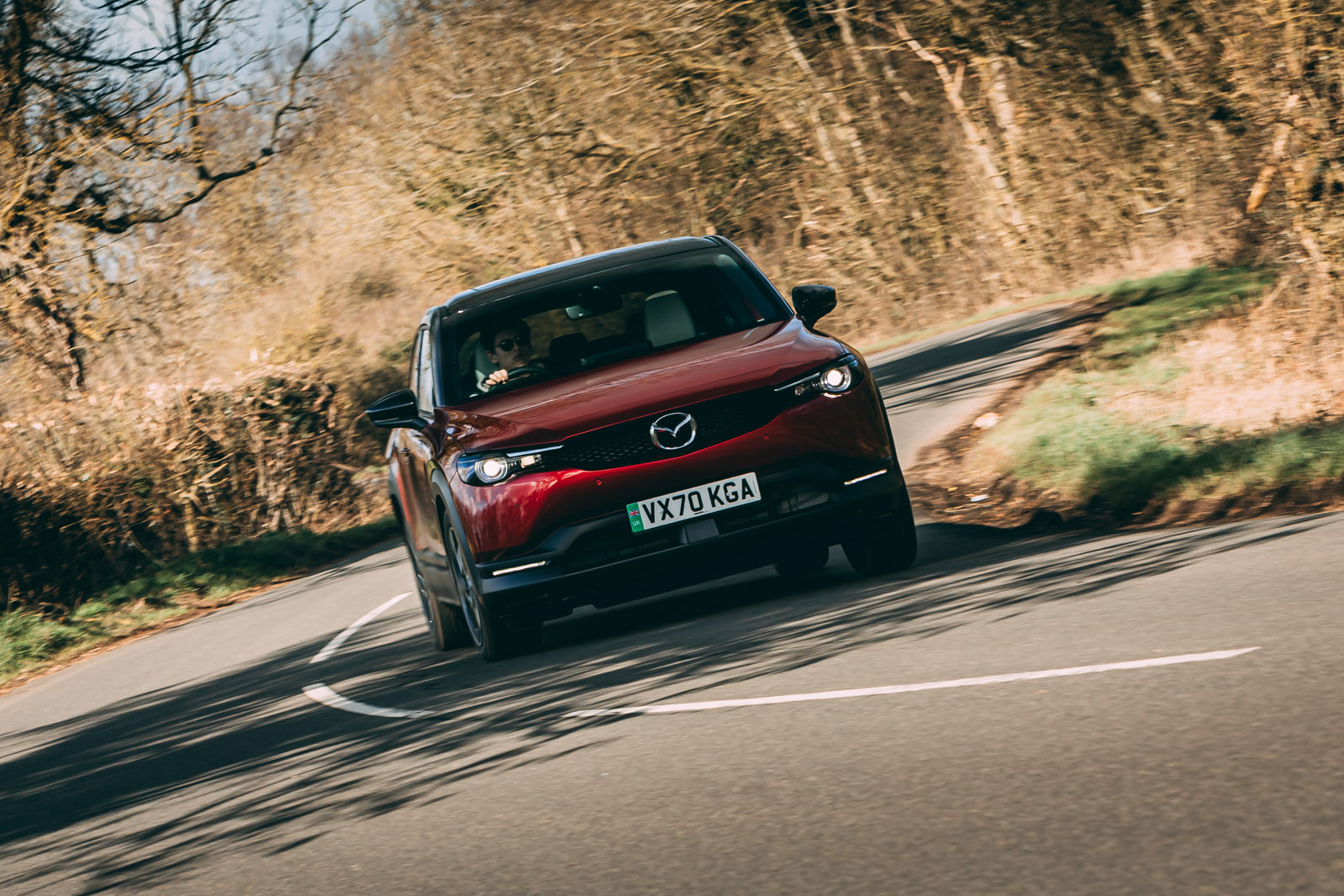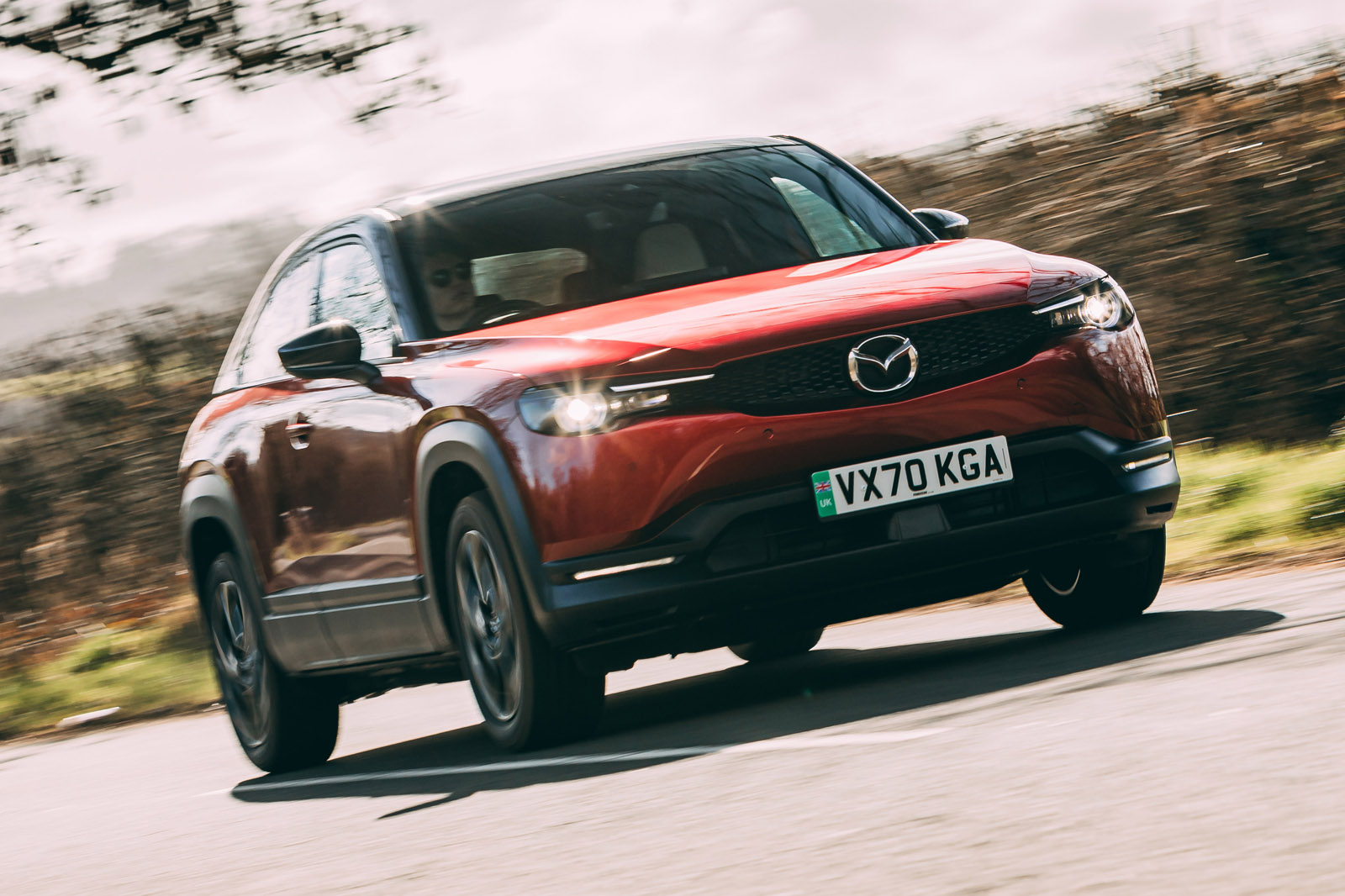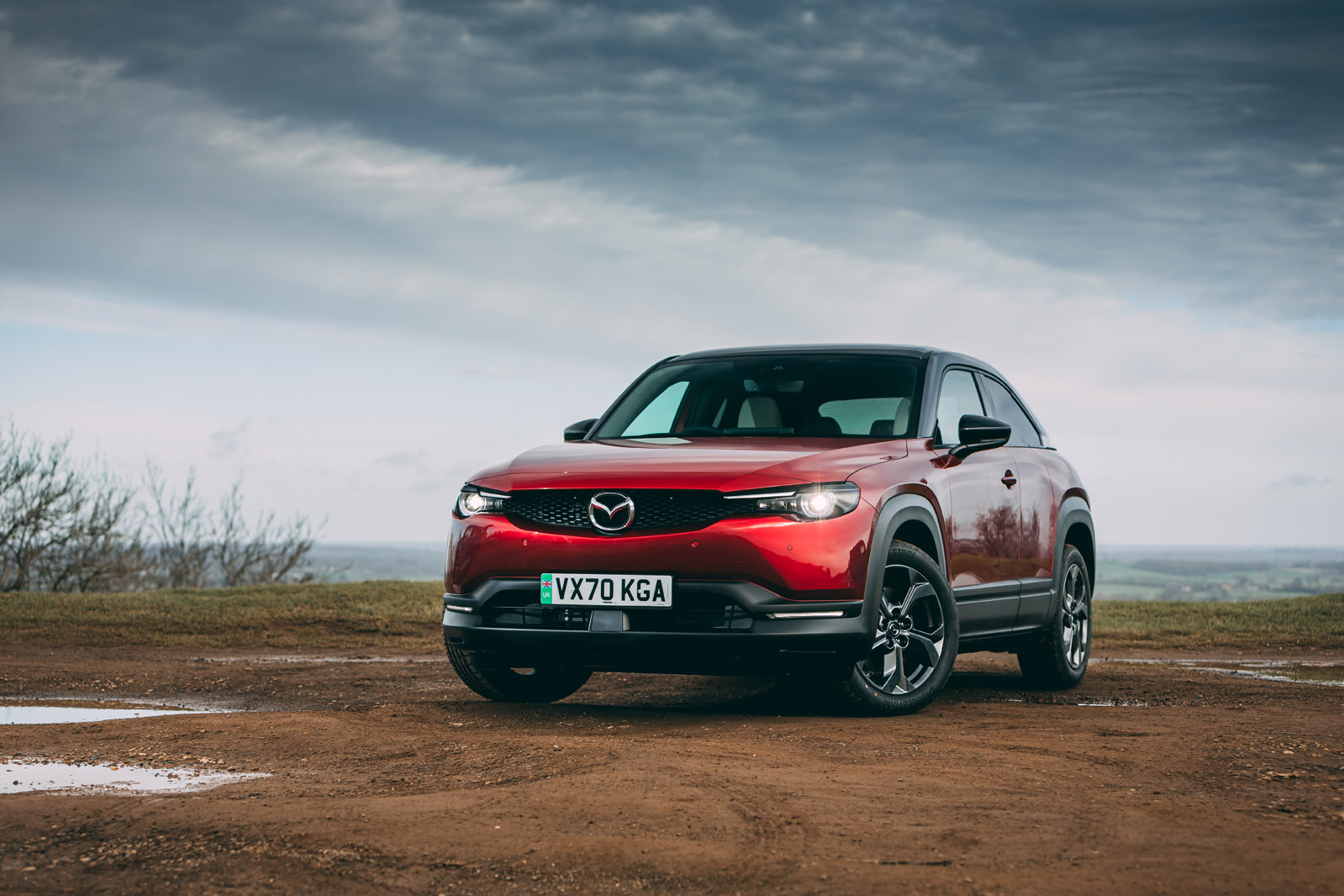Around town, where the car’s relaxed steering can come across as slow, the MX-30 feels rather ordinary; forgettable, even. More steering effort is needed to get its nose to tuck in around roundabouts, where the likes of the Peugeot e-208 and Mini Electric feel far keener and more obviously agile. Here, it would be nice to have seen a bit more of that Mazda magic present itself in the sorts of environments where the MX-30 will be used for the vast majority of the time.
After its slightly forgettable performance around town, it was surprising to see just how keenly the MX-30 took to Millbrook’s challenging Hill Route. Though the limited power reserves prevented the car from accruing anything approaching big speeds, guiding it through the course’s tighter twists and turns proved to be an enjoyable experience.
You can better interact with its delicate, precise steering, and really feel the car settle on the outside tyres as you tip it into quick corners.
There’s a good amount of front-end grip to be found, and no sense of the car’s electronic stability systems breathing down your neck. True, this car feels set up for a secure, surefooted style of handling, and perhaps a bit more adjustability wouldn’t have gone amiss. But given the sacrifices Mazda has made in terms of this car’s range, it’s reassuring to see that the MX-30 is still capable of showcasing some dynamism.
Comfort and isolation
Despite employing a relatively simple torsion beam at its rear axle, the MX-30 is a decently composed and smooth-riding EV.
At low speeds, the car is suitably supple, its suspension capable of soaking up most impacts with minimal crashing or thumping. Only on particularly rough, pockmarked stretches of road does its secondary ride start to pitter-patter about a bit more conspicuously, with most of that disturbance being focused – somewhat unsurprisingly – at the rear axle.
High-frequency undulations on faster roads are arguably what cause the MX-30 the most grief. Here, it feels reactive and animated; a bit less willing to breathe with the surface changes underwheel.
It would be unfair to label the MX-30 uncomfortable, but equally inaccurate to suggest it had a particular talent for body control over really testing surfaces taken at speed.
Still, the MX-30 offers a comfortable driving position that’s pleasingly adjustable, and seats that offer good levels of support. Forward visibility is very good too, although those freestyle doors and chunky pillars do obscure your over-the-shoulder view a little. The cabin is nicely hushed at motorway speeds, too. Our microphones returned a reading of 66dB at 70mph, which compares well with the Honda E’s 68dB effort.


